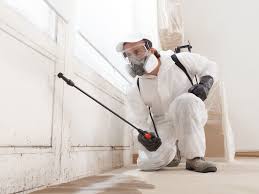Introduction: Understanding Mold Problems
Mold is more than an unsightly annoyance—it’s a serious issue that can compromise both property integrity and human health. Whether it’s black mold in your bathroom or a hidden colony in your basement, mold thrives in damp, dark environments and can spread quickly. Mold remediation and removal are critical steps in restoring a safe and clean indoor space. In this article, we’ll explore everything you need to know about professional mold remediation—from causes and identification to removal methods and prevention.
What Is Mold?
Mold is a type of fungus that reproduces through microscopic spores, which float through the air and land on damp surfaces. When moisture is present, especially in indoor environments, these spores can multiply rapidly.
Common types of indoor mold include:
-
Aspergillus
-
Cladosporium
-
Stachybotrys (black mold)
-
Penicillium
Common Causes of Mold Growth
Understanding the root causes of mold is crucial in both removal and prevention. Mold grows in environments with:
-
High humidity (above 60%)
-
Water leaks (plumbing, roof, or foundation)
-
Poor ventilation
-
Flood damage
-
Damp basements or crawlspaces
Health Risks Associated with Mold Exposure
Prolonged exposure to mold can lead to a variety of health issues, particularly for individuals with allergies, asthma, or compromised immune systems. Common symptoms include:
-
Nasal congestion
-
Throat irritation
-
Eye discomfort
-
Skin rashes
-
Respiratory problems
-
Headaches
Signs You Need Mold Remediation
Mold is not always visible. Here are signs that mold may be present:
-
Musty odor in a specific area
-
Discoloration or stains on walls or ceilings
-
Warped drywall or wood
-
Increased allergy symptoms indoors
-
Past flooding or leaks
The Mold Remediation Process
Professional mold remediation is a structured process involving several critical steps:
1. Initial Inspection and Assessment
A certified mold specialist will inspect your property using tools like moisture meters, infrared cameras, and air quality tests to identify the type and extent of mold contamination.
2. Containment
To prevent spores from spreading, the affected area is isolated using plastic sheeting and negative air pressure systems.
3. Air Filtration
HEPA (High-Efficiency Particulate Air) filters are used to capture airborne spores and purify the air.
4. Mold Removal
Depending on the surface, different methods are used:
-
Hard surfaces: scrubbed with antimicrobial agents
-
Porous materials (drywall, insulation): removed and discarded
-
Wood framing: sanded and treated if structurally sound
5. Cleaning and Sanitization
All belongings and structural elements in the affected area are thoroughly cleaned and disinfected.
6. Restoration
Once the mold is eliminated, damaged structures are repaired or replaced—this may include repainting, drywall replacement, or flooring repairs.
DIY Mold Removal vs. Professional Remediation
When DIY Is Okay:
-
Small areas under 10 square feet
-
Mold on non-porous surfaces (tile, glass, metal)
-
No existing health issues in the household
DIY Tips:
-
Wear protective gear (gloves, mask, goggles)
-
Use a solution of vinegar, hydrogen peroxide, or a commercial mold remover
-
Fix moisture problems immediately
When to Call Professionals:
-
Large infestations
-
Mold in HVAC systems or behind walls
-
Water damage spanning more than 24-48 hours
-
Recurring mold problems
Hiring certified mold remediation professionals ensures proper containment, safe disposal, and complete elimination of mold.
Costs of Mold Remediation
The cost varies based on the severity, location, and extent of mold damage:
-
Small areas: $500–$1,500
-
Moderate remediation: $2,000–$5,000
-
Severe infestations (whole-house): $6,000–$20,000+
Insurance may cover mold remediation if it’s linked to a covered peril like a sudden pipe burst. However, claims due to neglect or maintenance issues are typically denied.
Preventing Future Mold Growth
The best way to deal with mold is to prevent it altogether. Here’s how:
1. Control Moisture
-
Fix leaks promptly
-
Use dehumidifiers in humid areas
-
Ensure proper drainage around the foundation
2. Improve Ventilation
-
Install exhaust fans in bathrooms and kitchens
-
Open windows regularly
-
Use HVAC systems with proper filters
3. Monitor Humidity Levels
-
Keep indoor humidity below 60%
-
Use a hygrometer to check levels
4. Routine Inspections
-
Check attics, basements, and crawlspaces periodically
-
Inspect appliances like washing machines and water heaters
Legal and Safety Considerations
If you’re a landlord or property manager, local laws may require mold disclosure or immediate remediation. OSHA and EPA guidelines should be followed, especially in commercial or public buildings.
Final Thoughts
Mold remediation is not just about cleaning up visible spots—it’s about restoring the safety and integrity of your property. Whether you choose to handle small jobs yourself or hire a professional team, understanding the mold removal process is essential for maintaining a healthy environment.
Don’t let mold silently destroy your home or health. Take action at the first sign of trouble, and prioritize moisture control to prevent future growth.
FAQs About Mold Remediation
Q1: How long does mold remediation take?
A: Typically 1 to 5 days, depending on the size of the infestation.
Q2: Is mold removal safe for pets?
A: Pets should be kept away from the affected area during the remediation process.
Q3: Can mold come back after removal?
A: Yes, if moisture problems are not fixed, mold can return. Prevention is key.
Q4: What certifications should a mold remediation company have?
A: Look for IICRC (Institute of Inspection Cleaning and Restoration Certification) or NORMI certification
